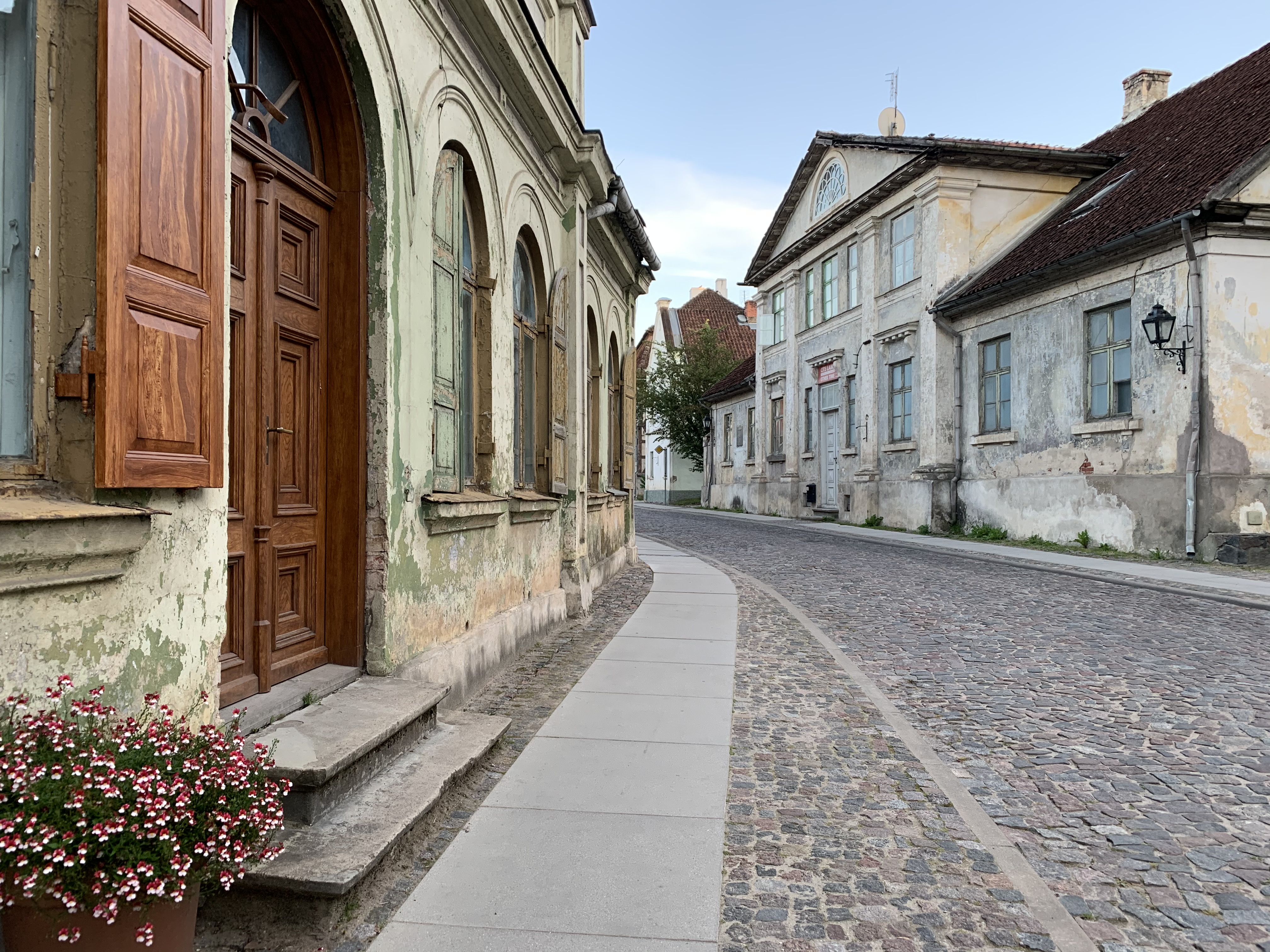- IHM - Serices and knowledge transfer in the field of clutural and natural heritage

Old Town of Kuldīga
Kuldīga | Latvia
Project Duration: 2019-2023
The World Heritage property "Old Town of Kuldīga" consists of the historic centre of Kuldīga, which is an exceptionally well-preserved example of traditional Baltic architecture and urban development from the 13th to the 19th century.
A significant part of Kuldīga’s history and development is linked to the Duchy of Courland and Semigallia (1561 - 1795), as it was its first administrative centre. The expanding street layout of the time as well as the influence of international craftsmen based on the Duchy's engagement in international trade and diplomatic ties with all major European powers of the 16th to 18th centuries, still marks the urban layout and architectural elements today. The international relations of the Duchy led to a multicultural society and an increase in foreign craftsmen living in its territory. This development, which was extraordinary at the time, continues to be directly legible in the architecture of the town of Kuldīga, with an exceptionally high density of well-preserved pre-19th century buildings, including not only traditional log buildings but also masonry structures that were built for both residential and public purposes. The interaction of the historic urban layout and the continuation of natural elements result in an authentic historic townscape that has no comparison in the region.
In the context of this project, Dr. Britta Rudolff and her team were responsible for the preparation of the Tentative List entry and continued to provide strategic advice in the preparation of the World Heritage Nomination and the Management Plan of the property. The team further supported the municipality during the entire evaluation process. The services provided by IHM included aspects such as guidance on the Attribute Mapping and the Comparative Analysis as well as stakeholder workshops regarding the development of an inclusive Strategic Management Plan.
The initiative ended with the succesful inscription of the property on the UNESCO World Heritage list. During the 44th session of the World Heritage Committee in Saudi-Arabia, the property was inscribed under criterium (v).

